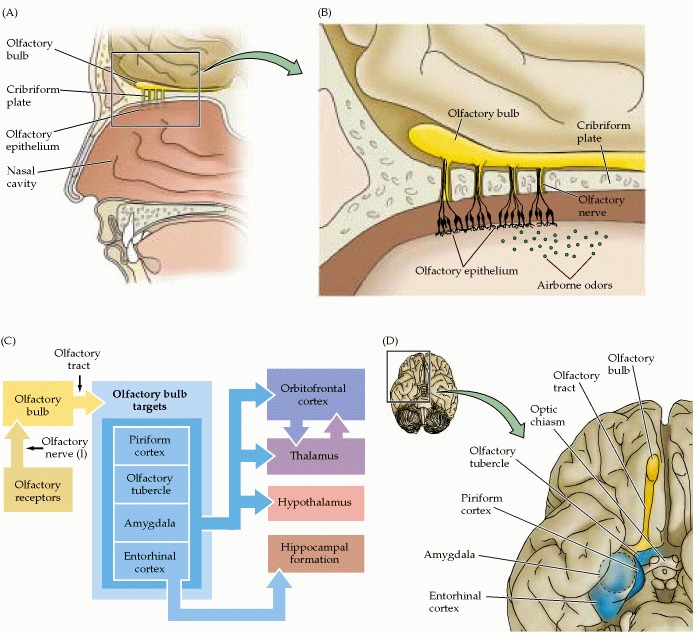![]()
![]()
![]()
Use LEFT and RIGHT arrow keys to navigate between flashcards;
Use UP and DOWN arrow keys to flip the card;
H to show hint;
A reads text to speech;
21 Cards in this Set
- Front
- Back
|
Central pathway for tactile information from body |

|
|
|
What column goes with pain and temperature from the body?
|
lateral spinothalamic |
|
|
What column goes with fine touch from the body?
|
dorsal column system
|
|
|
What column/trigeminal ganglion goes with pain and temperature from the head?
|
spinal
|
|
|
What trigeminal ganglion goes with touch from the head?
|
principal/main ganglion
|
|
|
What column goes with unconscious proprioception from the body?
|
spinocerebellar tracts is for unconscious proprioception on the ipsilateral side
|
|
|
Which dorsal column of the spinal cord allows fibers from lower body?
|
gracile tract
|
|
|
Which dorsal column from the spinal cord allows fibers from the upper body?
|
cuneate tract
|
|
|
Which is more medial gracile or cuneate?
|
gracile
|
|
|
What is the pathway for tactile information from the face?
|

1) First order Trigeminal nerve divisions' peripheral processes 2) First order trigeminal ganglion 3) Synapse with ipsilateral second order neuron in Main trigeminal nucleus in pons 4) Cross over midline 5) Ascend contralateral ventral trigeminothalamic tract 6) Synapse with with third order neurons in contralateral VPM 7)Third order neurons synapse on fourth order neurons in cortex |
|
|
Which pathway is responsible for the lower trunk and lower extremity postural adjustments and movements?
|
dorsal spinocerebellar tract
|
|
|
What is the pathway resposnible for upper trunk and upper extremity unconscious proprioception?
|
cuneocerebellar tract
|
|
|
What is the pathway of the dorsal spinocerebellar tract?
|

1) First order neuron cell body in DRG 2) Synapse with second order neuron in the dorsal nucleus of clark 3) Ascend to inferior cerebellar peduncle/restiform body 4) ascend the dorsal spino-cerebellar tract and synapse at -1-anterior lobe of cerebellum -2-paramedian lobule -3- cerebellar nuclei |
|
|
What is the path of the cuneocerebellar tract?
|

1)First order neuron cell body in DRG 2) ascend ipsilateral to second order neuron in lateral cuneate nucleus of medulla 3) ascend through restiform body to synapse on the ipsilateral -anterior lobe, paramedial lobule and cerebellar nuclei |
|
|
What two tracks make up the anteriolateral system?
|
lateral spinothalamic tract + anterior spinothalamic tract
|
|
|
What is the pathway for pain and sensation from the body?
|

The anterolateral pathway
1) Pain stimuli to primary afferent in DRG 2) ascend ipsilateral several spinal levels in Lissauer's tract 3)synapse on the second order neuron in the dorsal horn 4) cross the midline at ventral white commissure in spinal cord 5) second order neuron ascends the contralateral spinal cord through the contralateral lateral funiculus 6) second order axon ascends through the lateral thalamic tract 7)second order neuron synapses at VPL to join third order neuron 8) third order neuron ascends and synapses at 4th order neuron in contralateral somatosensory cortex |
|
|
What is the pathway for pain and temperature sensation from the face?
|

Ventral Trigeminal Thalamic Tract
1) first order neurons are branches of trigeminal nerve with cell body in trigeminal ganglion 2) first order neurons pass through spinal trigeminal tract with facial, glossopharyngeal and vagus 3) first order neurons synapse on spinal trigeminal nuclei 4) second order neuron passes through reticular formation to cross the midline 4) second order neuron ascends through contralateral ventral trigeminothalamic tract 5) second order neuron synapses in third order neuron in VPM 6) third order neuron ascends to contralateral cortex to synapse with fourth order neuron |
|
|
What is the visual pathway to the straite cortex?
|

The Visual Pathway
1)First order neurons originate at the optic nerves 2) The nasal retinal nerves cross the midline at the optic chaism at the optic chiasm 3) the optic tract thus has the ipsilateral temporal retina and contralateral nasal retina 4) the neurons in the optic tract synapse at the lateral geniculate nuclei 5) meyers loop occurs with neurons from the lateral LGN and travel to the cuneus gyrus 5) neurons from the medial LGN travel to the lingual gyrus |
|
|
What is the visual pathway for the subcortical visual cortices?
|
nasal retina --> optic nerve
1) hypothalamus 2) pretectum 3) superior colliculus 4) LGN to straite cortex |
|
|
What is the pathway for olfaction?
|

1)olfactory receptor 2) olfactory nerve, CN I 3) olfactory bulb 4) olfactory tract 5) olfactory bulb targets 6) final target from olfactory bulb target |
|
|
What is the pathway for taste?
|

1) CN VII, IX and X 2) they synapse on nucleus of solitary tract 3) they can either synapse directly to VPM of thalamus or they can synapse on the hypothalamus or amygdala 4) from VPM they go to insula and frontal cortex |

